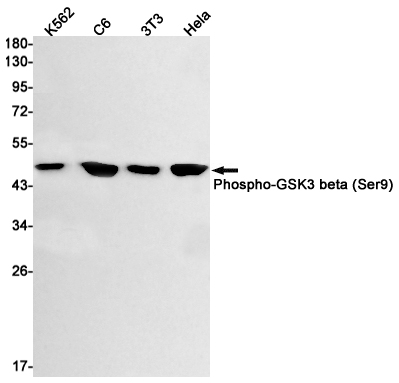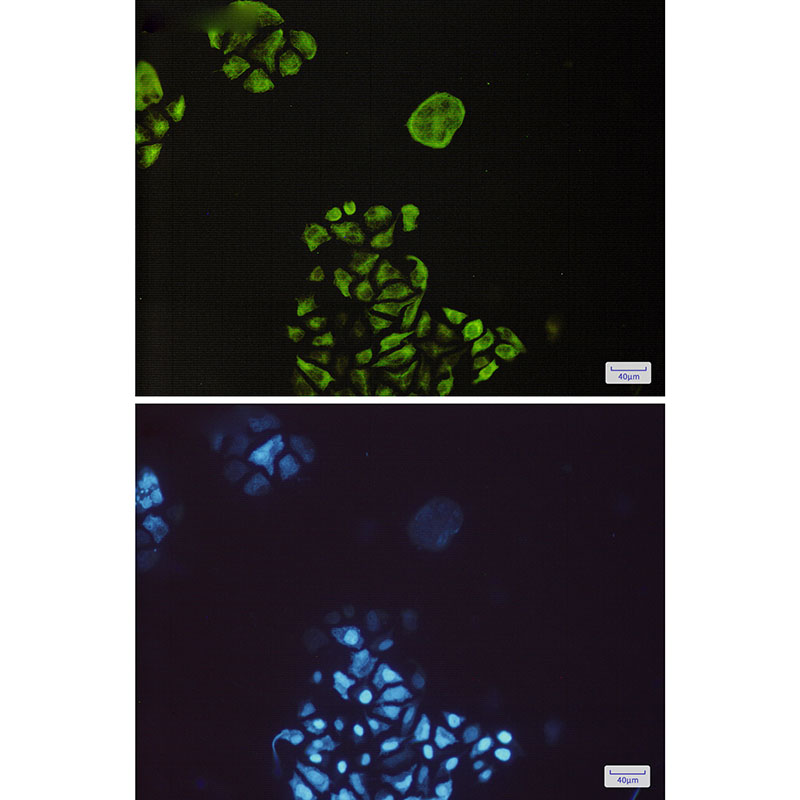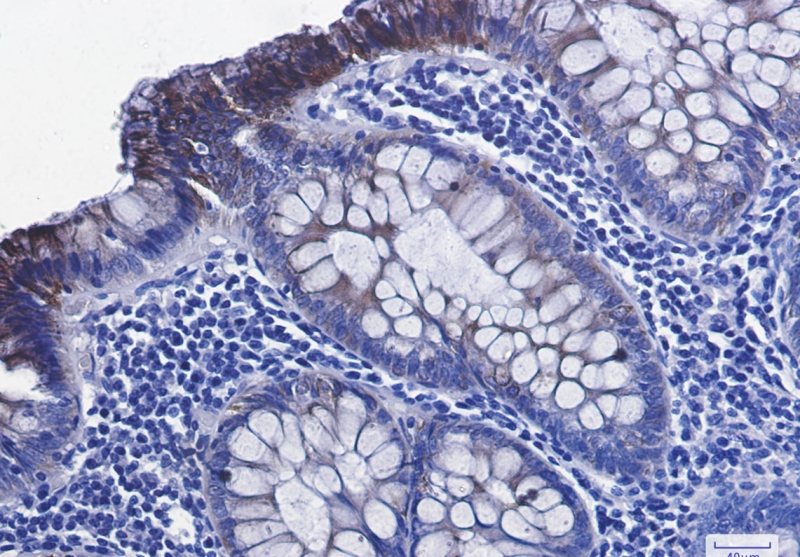


| WB | 咨询技术 | Human,Mouse,Rat |
| IF | 咨询技术 | Human,Mouse,Rat |
| IHC | 1/50-1/100 | Human,Mouse,Rat |
| ICC | 1/50-1/200 | Human,Mouse,Rat |
| FCM | 咨询技术 | Human,Mouse,Rat |
| Elisa | 咨询技术 | Human,Mouse,Rat |
| Aliases | GSK3B; Glycogen synthase kinase-3 beta; GSK-3 beta; Serine/threonine-protein kinase GSK3B |
| Entrez GeneID | 2932 |
| WB Predicted band size | Calculated MW: 47 kDa; Observed MW: 47 kDa |
| Host/Isotype | Rabbit IgG |
| Antibody Type | Primary antibody |
| Storage | Store at 4°C short term. Aliquot and store at -20°C long term. Avoid freeze/thaw cycles. |
| Species Reactivity | Human,Mouse,Rat |
| Immunogen | A synthetic phosphopeptide corresponding to residues surrounding Ser9 of human GSK3 beta |
| Formulation | Purified antibody in TBS with 0.05% sodium azide,0.05%BSA and 50% glycerol. |
+ +
以下是3-4篇关于 **Phospho-GSK3β (Ser9)** 抗体的参考文献及简要摘要:
---
1. **文献名称**:*Regulation of Akt and Glycogen Synthase Kinase-3 Beta Phosphorylation by Sodium Valproate and Lithium*
**作者**:Chen G, **et al.**
**摘要**:研究丙戊酸钠和锂盐对Akt和GSK3β磷酸化的调控作用,通过Western blot使用Phospho-GSK3β (Ser9)抗体,发现两种药物通过抑制GSK3β活性影响神经保护作用。
2. **文献名称**:*Inactivation of Glycogen Synthase Kinase-3β by Phosphorylation: New Role in Alzheimer's Disease*
**作者**:Hernández F, **et al.**
**摘要**:探讨阿尔茨海默病中GSK3β的Ser9磷酸化与tau蛋白异常磷酸化的关系,抗体用于检测脑组织样本中GSK3β的失活状态。
3. **文献名称**:*Insulin Stimulates the Phosphorylation of GSK3β at Serine 9 in Adipocytes via a mTOR-Dependent Pathway*
**作者**:Mora A, **et al.**
**摘要**:揭示胰岛素通过mTOR通路促进脂肪细胞中GSK3β的Ser9磷酸化,抗体用于验证下游信号通路的活性变化。
4. **文献名称**:*Wnt Signaling Requires Inactivation of GSK3β by Phosphorylation at Serine 9 in Mammalian Cells*
**作者**:Ding VW, **et al.**
**摘要**:证明Wnt信号通路通过抑制GSK3β活性(Ser9磷酸化)促进β-catenin稳定,抗体用于检测细胞模型中磷酸化水平的变化。
---
以上文献均涉及Phospho-GSK3β (Ser9)抗体在信号通路、疾病模型或药物机制研究中的应用。
Phospho-GSK3 beta (Ser9) antibody is a key tool for studying the regulation and function of glycogen synthase kinase-3 beta (GSK3β), a multifunctional serine/threonine kinase involved in cellular signaling pathways. GSK3β plays critical roles in glycogen metabolism, cell proliferation, differentiation, and apoptosis. Its activity is primarily regulated by inhibitory phosphorylation at Ser9. which is mediated by upstream kinases such as Akt (protein kinase B), PKC, or p90 ribosomal S6 kinase. This phosphorylation event suppresses GSK3β’s kinase activity, allowing downstream targets like beta-catenin, tau, and cyclin D1 to accumulate, thereby influencing processes such as Wnt signaling, neuronal development, and cell cycle progression.
The Phospho-GSK3 beta (Ser9) antibody specifically detects the inactive, Ser9-phosphorylated form of GSK3β. Researchers use it to investigate signaling dynamics in diseases like diabetes, neurodegenerative disorders (e.g., Alzheimer’s disease), and cancer, where GSK3β dysregulation is implicated. It is widely applied in techniques such as Western blotting, immunohistochemistry, and immunofluorescence to assess pathway activation in response to growth factors, insulin, or therapeutic agents. Validating this antibody’s specificity is essential, as cross-reactivity with other phosphorylated proteins or isoforms (e.g., GSK3α) could lead to misinterpretation. Understanding GSK3β phosphorylation status helps elucidate cellular responses to stimuli and therapeutic interventions.
×